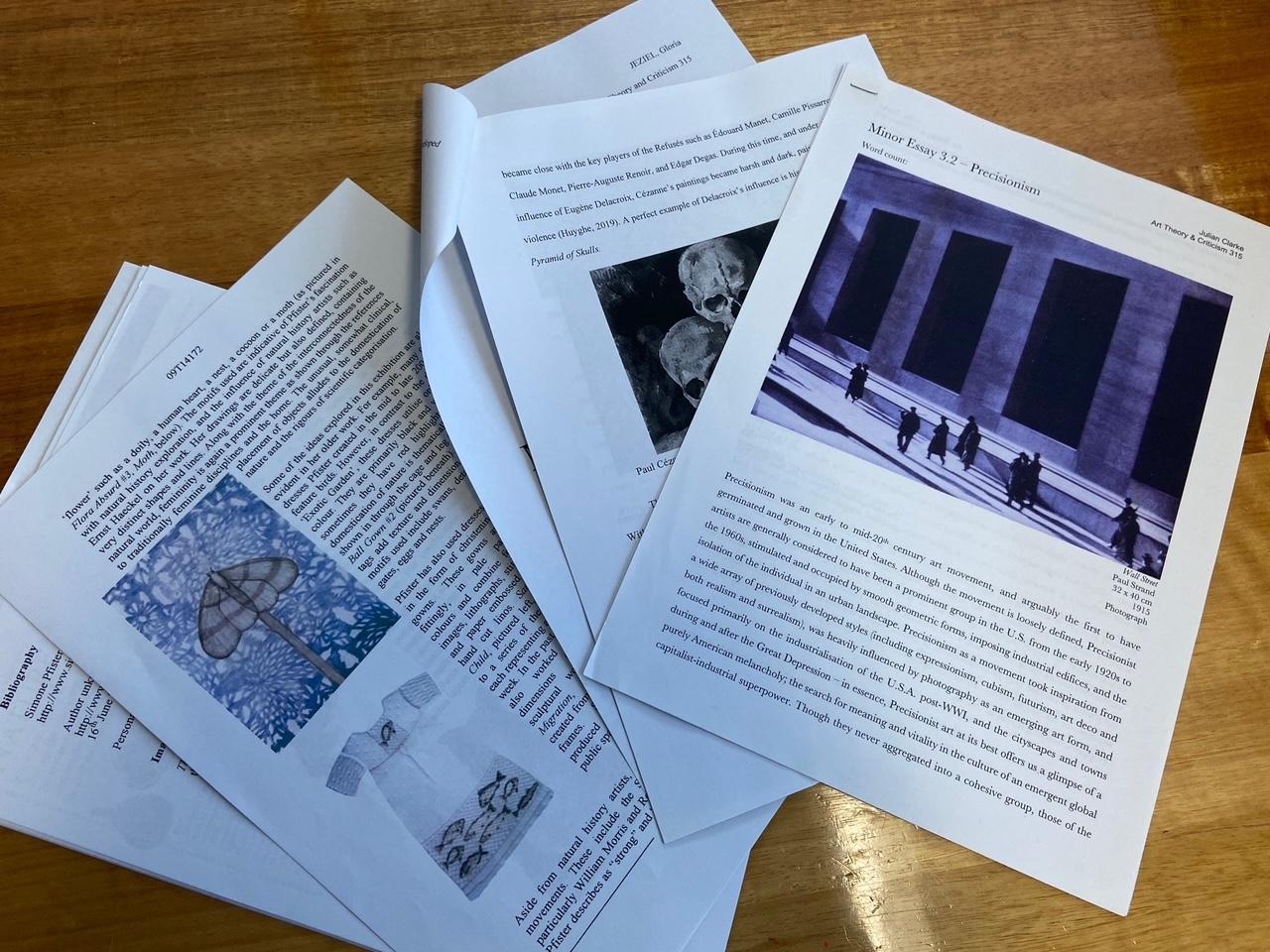TCE Contemporary Art Practice Level 3

TCE Contemporary Art Practice Level 3 (previously Art Theory and Criticism Level 3)
| 🎓Course Type | Pre-tertiary |
|---|---|
| TASC Code | CAP315124 |
| TCE Points | 15 |
| ⏱Hours | 150 |
| ✔️Standard | Reading and Writing |
| 📚Prerequisites | NIL |
📎Desirable prior experiences | Suitable for students who have studied Art and Design subjects in High School. Have an interest in a career in the creative arts sector. |
| 📝Assessment | Journal and support material 1 Short response 2 Investigations 2 Multi modal presentations Folio 6000 words |
What will I learn?
Contemporary Art Practice is a course that does not involve making art or sitting an exam.
In Contemporary Art Practice Level 3 learners explore the professional world of contemporary art. They gain creative and cultural industry knowledge and skills as they explore professional pathways. Learners investigate this through the roles of:
- arts critic: a professional with an interpretative role that analyses and evaluates works of art. This is often tied to a sound theoretical understanding and consideration of perspectives.
- arts curator: a professional who manages artworks or artefacts as a collection or exhibition in contexts such as museums or art galleries.
Learners choose one of these professional roles to plan and conduct an inquiry. They will develop their knowledge and understanding of skills in the chosen professional pathway.
Learners analyse, interpret and evaluate historical contexts and apply this knowledge to contemporary visual art. To do this, they will undertake investigations into arts movements. The arts movements chosen for inquiry can be from a range of historical movements into the contemporary world. This will provide learners with a context to their inquiry. They communicate their ideas to others using different modes and professional perspectives.
In Contemporary Art Practice Level 3, learners develop strong communication skills in different modes. These may include written essays or reports, curatorial statements or spoken communication. Learners are assessed on their inquiry which consists of 2 parts:
- A research inquiry into an historical art context and the links to contemporary art practice
- An inquiry into either of the professional role of an arts curator or critic and the associated outputs in the broader contemporary art industry.
Contemporary Art PracticeLevel 3 is for learners interested in roles within the cultural and creative industries. These roles include those that support, manage, critique and promote artists and visual arts.
Contemporary Art Practice Level 3 is a Professional Studies course with a theoretical focus. This course connects learners to the contemporary visual arts, cultural and creative sector in Tasmania, Australia and globally. Learners explore historical art movements, along with social and cultural contexts of art in order to form opinions and draw conclusions related to contemporary art practices.
Learners will be provided with opportunities to be exposed to the cultural and creative sectors. Opportunities to observe and interact with professional practitioners will allow learners to model professional skills, behaviours and norms of the contemporary visual arts industry. Through this professional lens, they will also develop valuable transferable skills, including:
- communication skills with a global outlook
- creative, innovative and self-directed ways of working
- an adaptable and entrepreneurial mindset.
Why should I consider this course?
- You are motivated to inquire about how contemporary visual art is produced in a globally influenced, culturally diverse and technologically advancing world.
- You would like the opportunity to observe and interact with professional practitioners in order to model professional skills, behaviours and norms of the contemporary visual arts industry.
What Skills does this course provide?
Contemporary Art Practice Level 3 is a Professional Studies course.
- Through this professional lens, learners will develop valuable transferable skills, including:
- communication skills with a global outlook
- creative, innovative and self-directed ways of working, an adaptable and entrepreneurial mindset.
- communicate about visual art works and contexts in oral/signed and written form
- analyse artworks using concepts and principles of contemporary visual art theory
- analyse social, cultural and historical contexts of visual art
- analyse connections between contemporary visual art concepts and personal experience
- evaluate and apply current and informed industry knowledge
- communicate about contemporary visual art professional practice using visual art language
- select and apply time management, planning liaison and negotiation skills to contemporary visual art activities
- select and analyse contemporary visual art industry skills and apply in a range of contexts
- collate, analyse and evaluate the findings from an extended visual art practice inquiry
- employ critical thinking, organisational and research skills in analysis of visual art
- assess primary and secondary sources, their usefulness, reliability and contest-ability to resolve a visual art question
- apply principles of academic integrity
- engage with local, national and global visual art communities to expand knowledge and appreciation of visual arts, artists and art movements
What Pathway Options does this course provide?
Pathways out of Contemporary Art Practice Level 3 include courses at a tertiary level in fine arts, art history, curatorial studies, cultural leadership, librarianship, museum studies and creative arts. Learners may pursue a career pathway in the cultural and creative industries, communication fields, education, public relations, marketing and advertising sectors. It deepens and broadens the knowledge and appreciation of those learners destined to become designers, architects, artists, arts administrators, exhibition curators, art critics or art gallery directors.

